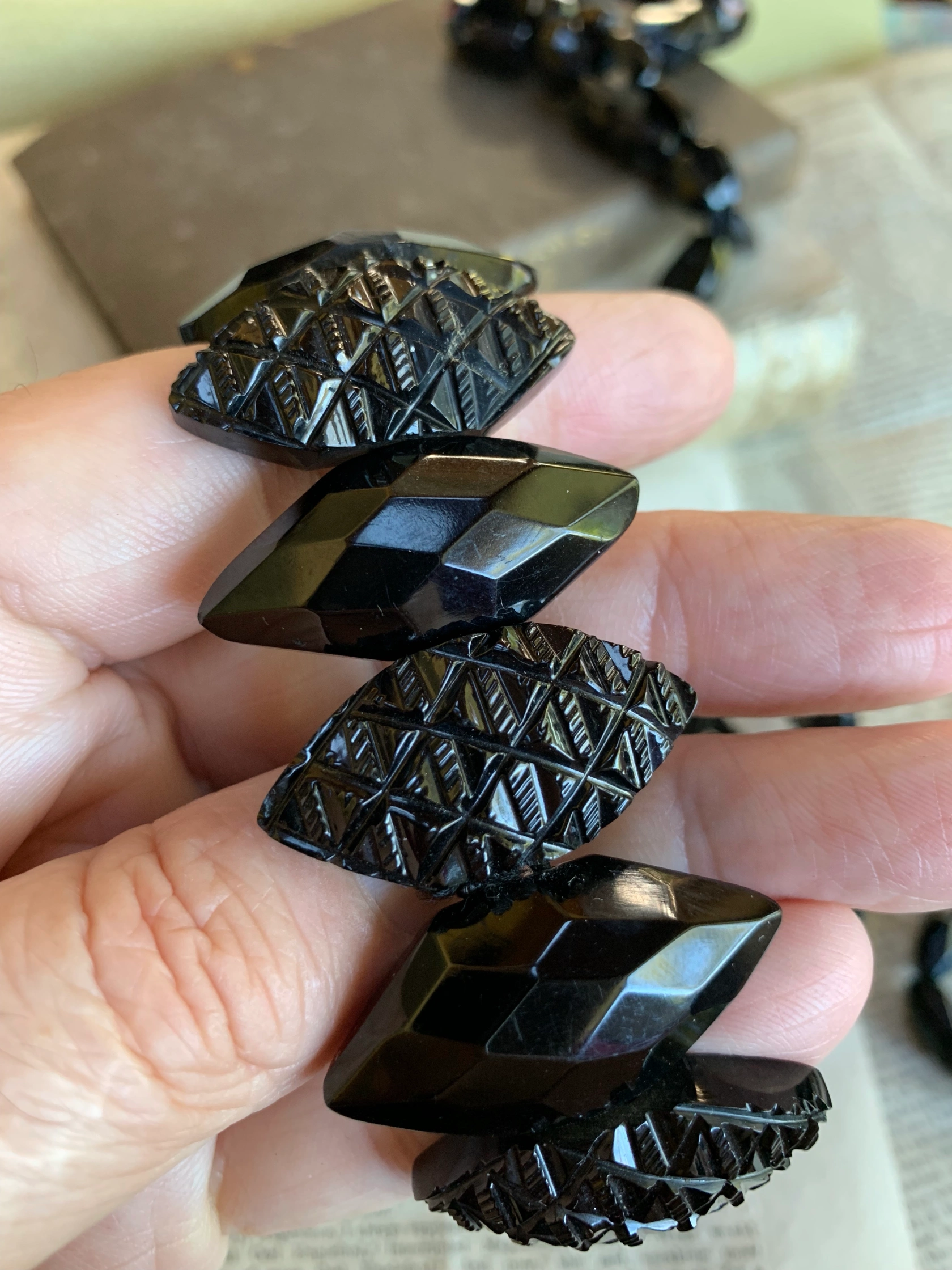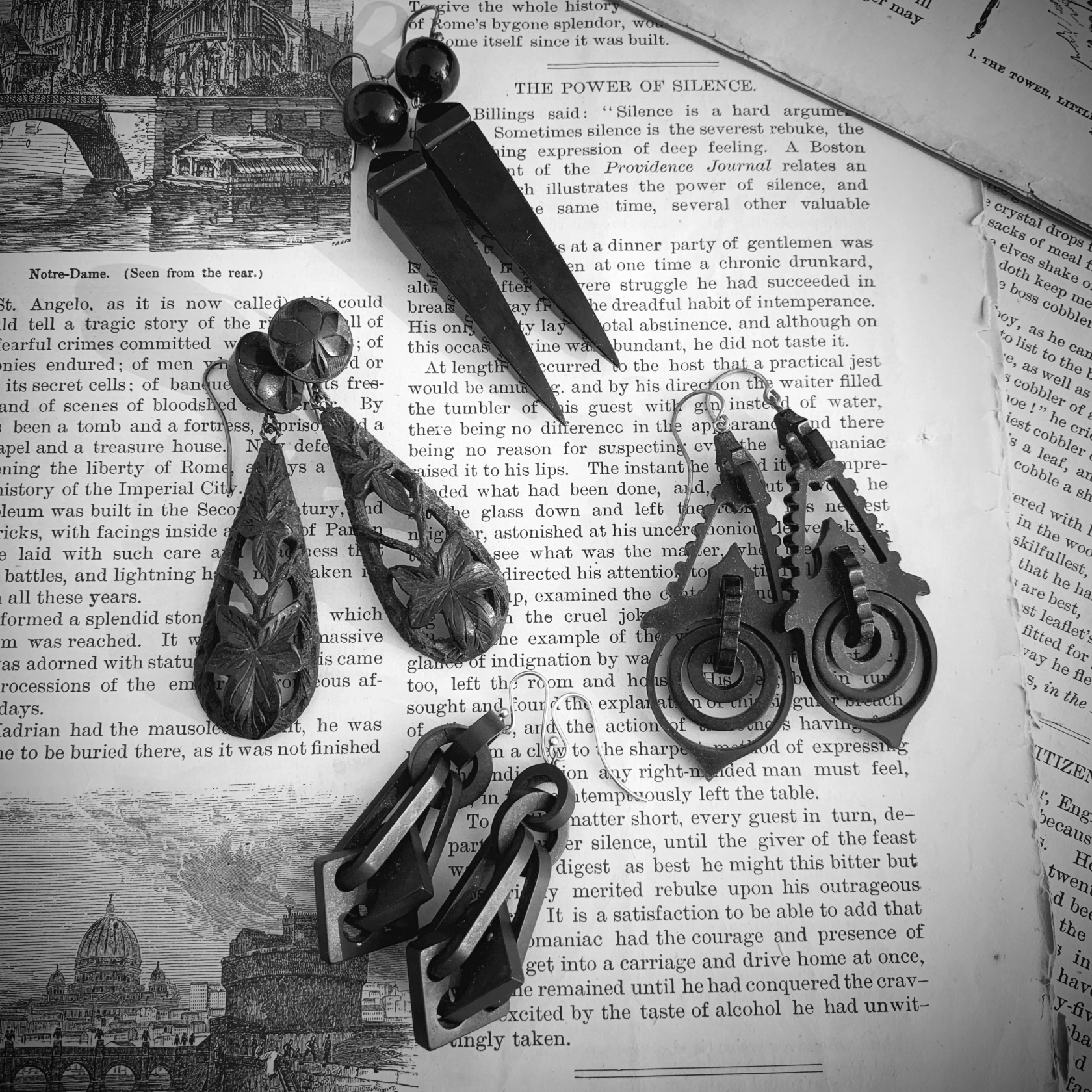The Darklings Cometh: Victorian Mourning Jewelry - Whitby Jet, Bog Oak - Part 1
- J. Morgyn White

- Mar 31, 2024
- 3 min read
I’ve been a collector of Whitby jet since I discovered it back in my teen years. My very first piece was this wired choker made of Vulcanite and Whitby Jet tied with velvet ribbons that I bought in England. I was smitten. From then on, not only was I hooked keeping an eye for an usual piece but I was also obsessed with learning about it. At that time research was limited to libraries or bookstore. The quintessential text of the time was Helen Muller’s Shire Edition Jet Jewelry and Ornament.

Muller blissfuly released a new book about ten years ago focusing on Whitby Jet. Both are slim volumes giving a great overview of jet.

In the past, esoteric antiques were mostly learned about by word of mouth, and through the examination of pieces. With Victorian mourning jewelry it really helps to see the different materials used to make jewelry to get a sense of what to expect and their peculiarities.
Growing up I had to rely on what you might find at an antique fair or jewelry shop, learning by experiencing treasured finds. Sites like eBay, Etsy and RubyLane, changed the world for antique hunters. Now Victorian mourning jewelry can be viewed and researched easily with a quick internet search.
Mourning Jewelry has been around for a long time, but it resurged into vogue when the beloved Queen Victoria’s husband Prince Albert died of typhoid fever in 1861. The demand for jet was high and because it was a natural product there were limitations on how much could be mined, cut and polished then set into jewels. This article gives a great insight into the period.

With the industrial revolution at full go, alternatives to natural products were invented. Vulcanite or Ebonite (the rubber version not the mineral) was discovered around 1851, giving the eager buyer of mourning jewelry other options.
The main “black” materials used in making Victorian “jet” or mourning jewelry were:
Whitby Jet – A fossilized coal mined in Yorkshire. You can learn more about the history of Whitby Jet here:.
Gutta Percha – an early plastic latex rubber
Vulcanite or Ebonite – a hardened rubber product
Vauxhall Glass – Similar in look to French Jet, it’s a shiny black glass with a mirror backing that was often set in a japanned (blackened metal) frame. UK-made black glass is generally called Vauxhall and other countries mirrored-back glass may be referred to French Jet.
French Jet – Black glass often beads, used extensively for clothing trimming – the non-shiny version is known as Crepe Stone.
Bog Wood – a fossilized wood found mainly in peat bogs of Ireland and England. More commonly known as Bog Oak in jewelry though pine, and yew are also found in UK peat bogs. This gives a great overview of Bog Oak history
Wood – Ebony or other naturally black or blackened/stained woods.
Bois Durci – A colored sawdust/wood flour mixed with blood and a binder an then molded
Onyx Stone
Horn – horn a natural product pressed into a mold.
Shell – often tortoiseshell which is not “jet-like” but there are darker shells which fall into the category. Some are inlaid with metals called pique.
Enameled or blackened metal.
Hair – woven into chains or earrings or under glass in lockets or rings.

Beyond the enthralling history, what I love about these vintage pieces is the handwork. With the jet it’s the smooth finishing and the design, but with the bog oak it’s the carving. When I discovered Bog Oak Abbey/Castle brooches for the first time, I was awe-struck by the delicate sawing. I have a small treasured collection of some very fine pieces. In the next installment I'll talk more about bog oak and the amazing work by Irish craftsmen.




Comments